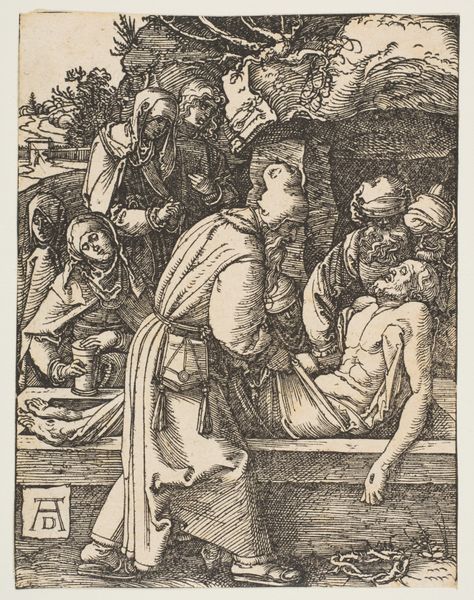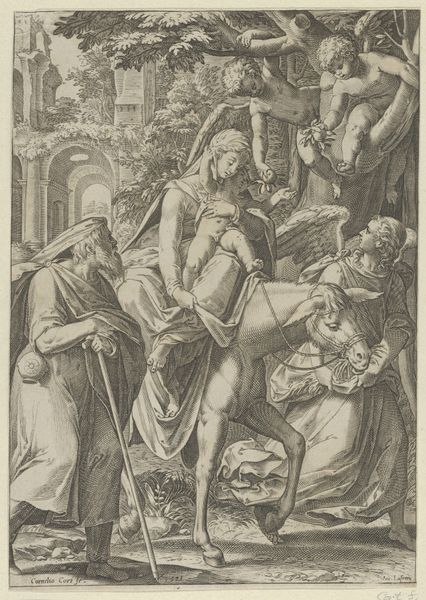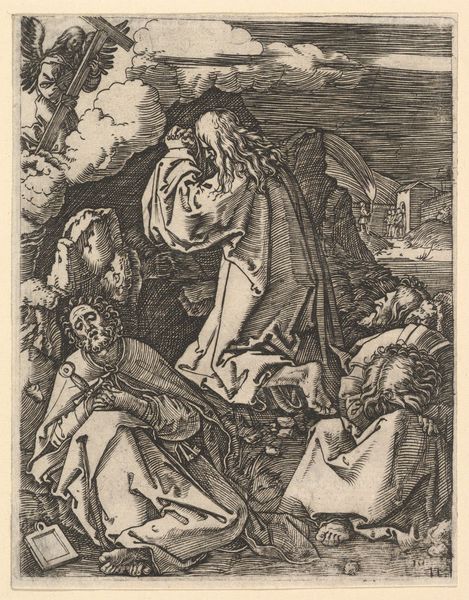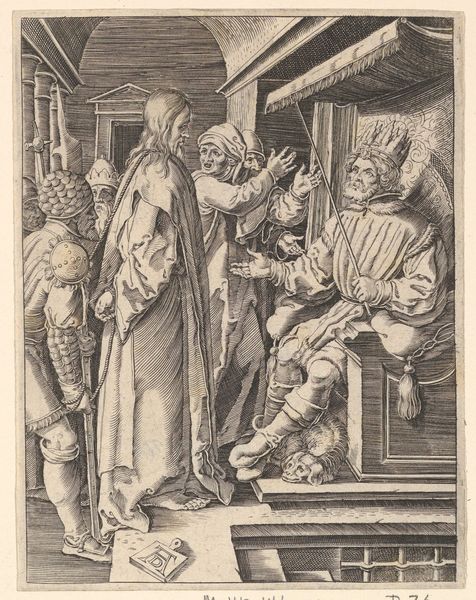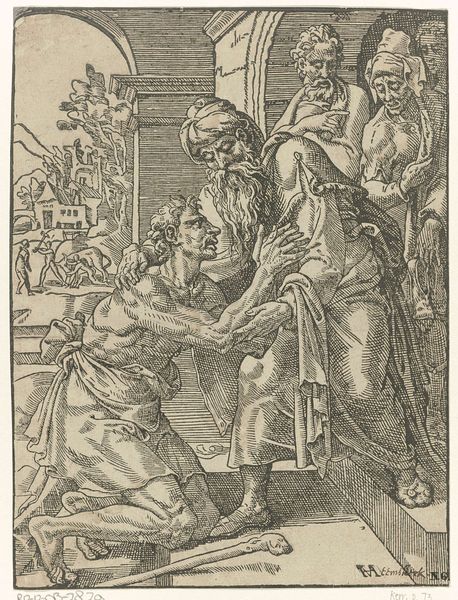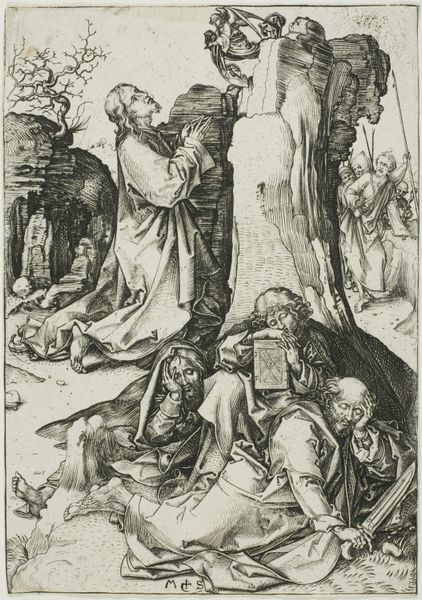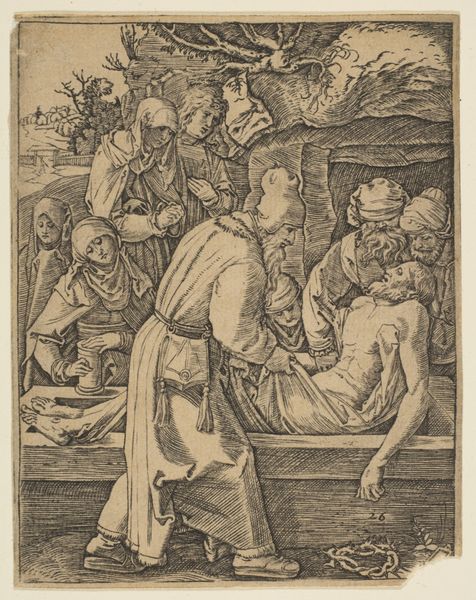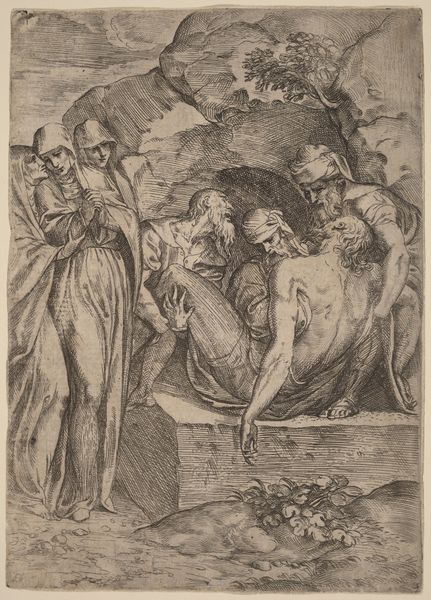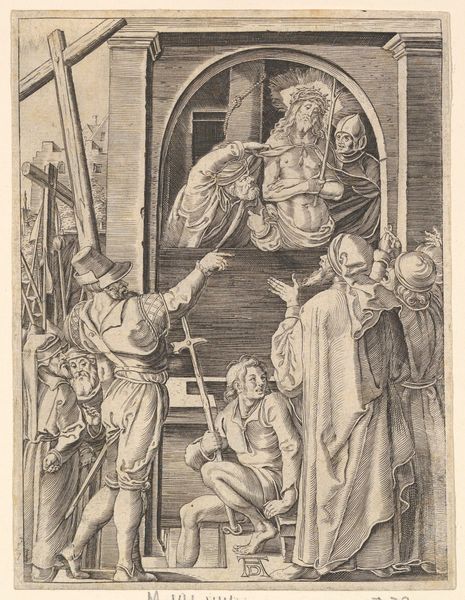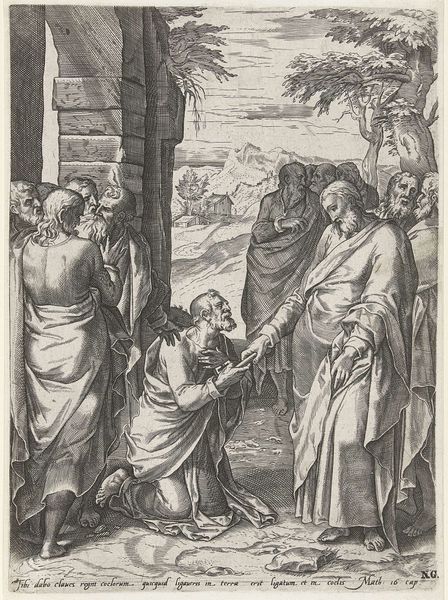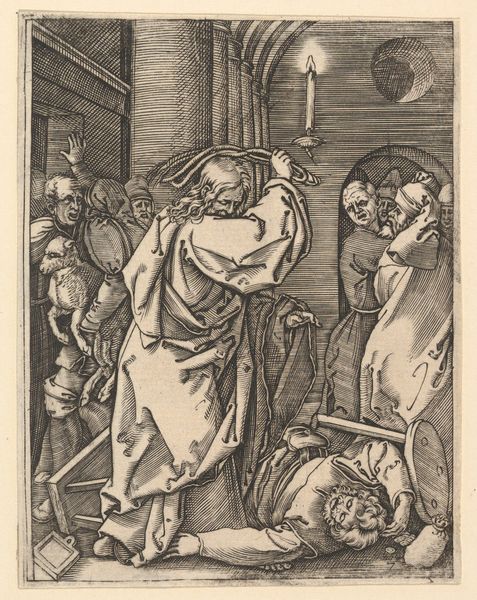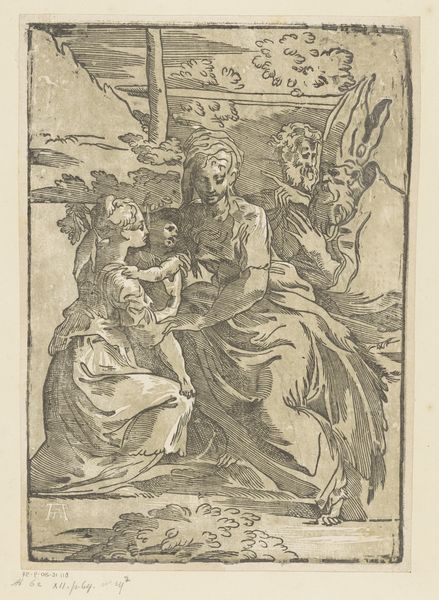
drawing, print, engraving
#
drawing
# print
#
figuration
#
history-painting
#
northern-renaissance
#
engraving
Dimensions: For the whole series: plate circa : 5 x 3 13/16 in. (12.7 x 9.7 cm)
Copyright: Public Domain
Curator: Here we have displayed a selection of “Engraved Copies of The Little Passion” conceived by Albrecht Durer between 1485 and 1699. Each delicate print captures a moment from Christ’s Passion. Editor: What immediately strikes me is the somber tone despite its small scale; each print feels heavy with grief, rendered meticulously through cross-hatching. Curator: Dürer’s skill with engraving allows him to explore intense tonal variation and complex textures within a small format. Note the folds of drapery, how each line contributes to its form and emotional weight. This highlights a sophisticated use of visual language and composition. Editor: Indeed. Consider the labour-intensive nature of engraving—the direct engagement with the material—which makes the artist almost a craftsman, using specialized tools to carve minute lines onto the metal plate. It’s as much a process of making as it is conveying religious narratives, almost echoing Christ’s own toil and suffering. Curator: From a formalist viewpoint, Dürer’s integration of the background with the figures is of critical importance. The consistent application of cross-hatching is applied regardless of importance, melding man with nature in harmonious symbiosis. The composition utilizes the principle of isocolon. Editor: That attention to detail also served a functional purpose. These prints weren’t just art; they were designed for dissemination, making religious imagery accessible across society, effectively democratizing access to spiritual narratives. The question of copies versus original has bearing here—the circulation, access and collective appreciation of this singular composition is critical to the cultural milieu in which it occurred. Curator: So, we appreciate how he uses contrast and visual texture as not only elements of aesthetic design but carriers of meaning, influencing the perception and engagement with his religious themes. The mastery evident within a deliberately confined frame amplifies, not restricts, Dürer’s artistry. Editor: Precisely! I’m left considering the hands that physically produced, distributed and owned each impression—an intricate network bound by both religious belief and the mechanisms of artisanal production. Dürer certainly wasn’t alone in creating a lasting impact.
Comments
No comments
Be the first to comment and join the conversation on the ultimate creative platform.

